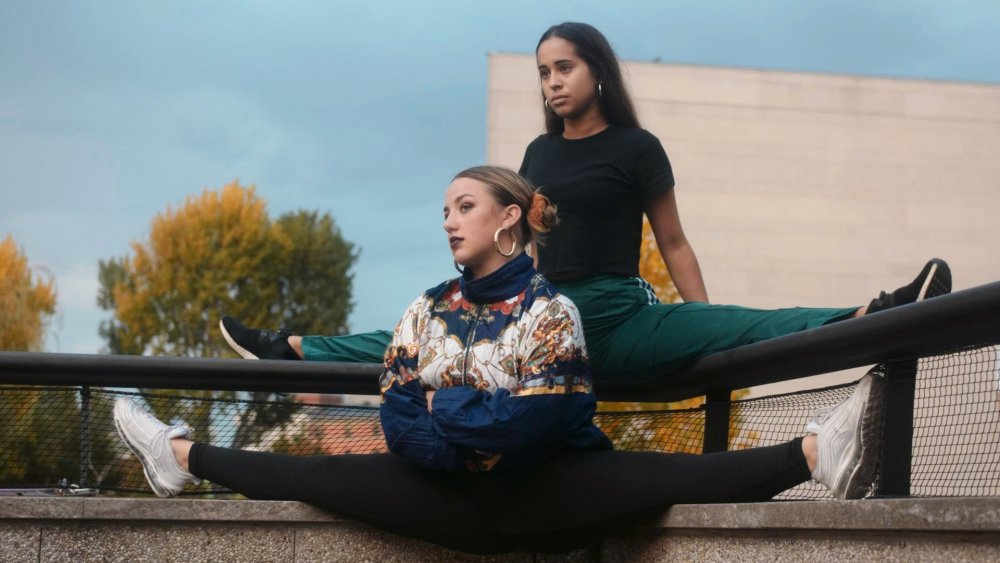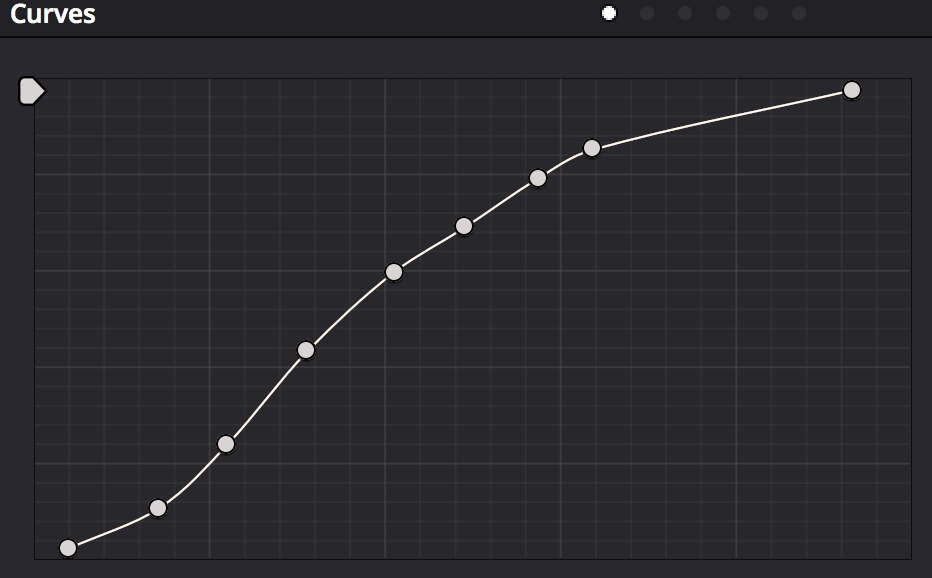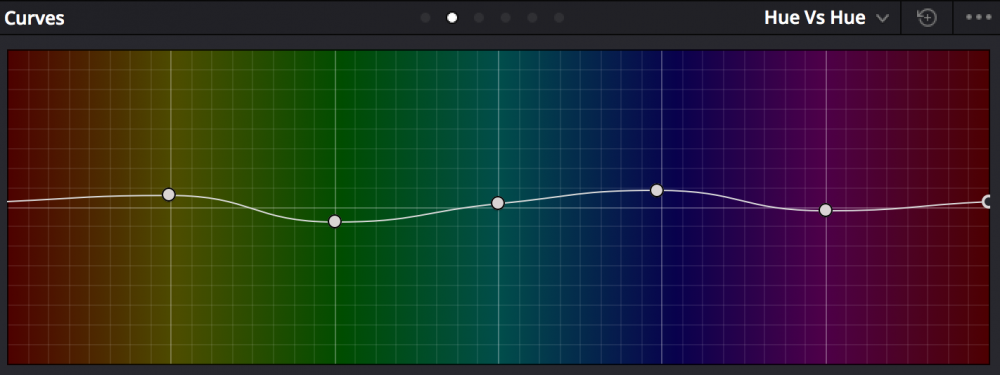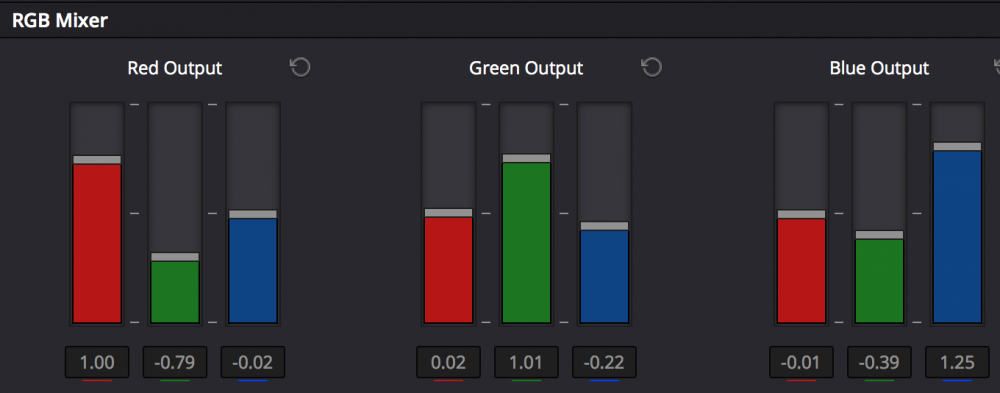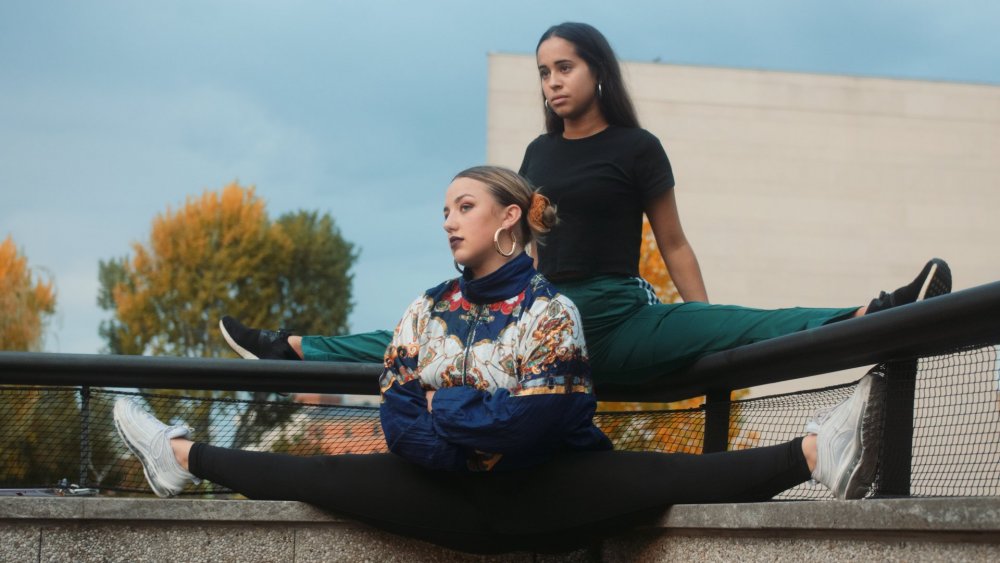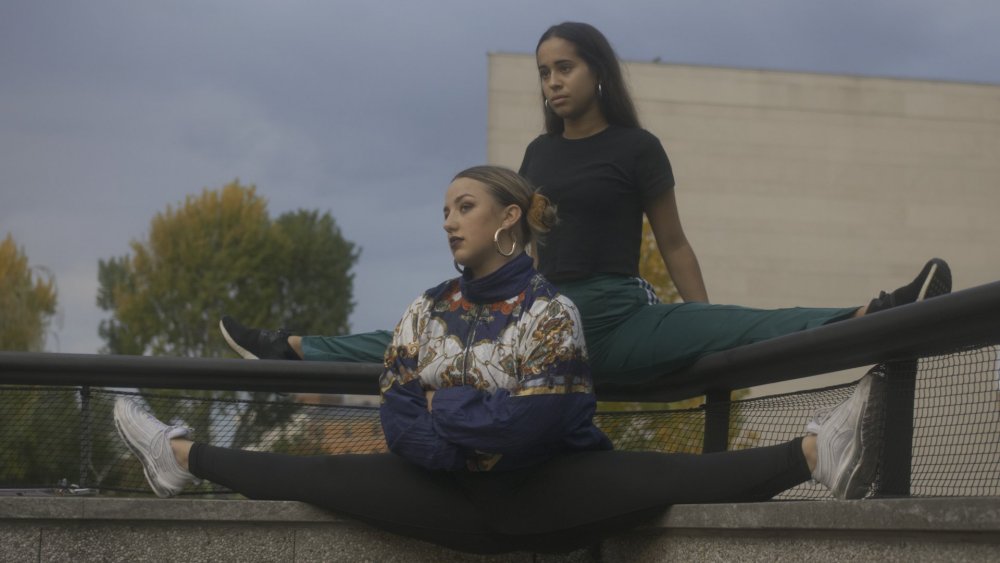Leaderboard
Popular Content
Showing content with the highest reputation on 10/20/2019 in all areas
-
The camera slider is underrated
austinchimp and 3 others reacted to Shell64 for a topic
I love slider shots. And it feels like today there is an obsession with gimbals. Honestly the shots most people do with gimbals looks boring now a days, and even when trying to keep the gimbal steady, the camera obviously looks like it’s floating. I like the look of a slider. It looks like a gimbal moving, but without the “floating in the air thing.” They aren’t used too much, and one can make beautiful camera movements with one. There is something about the camera being locked down and moving compared to a gimbal where the camera is “floating and moving.”4 points -
My take is that many of the things that camera nerds on forums obsess over are surprisingly unnoticeable. I used to get caught up in things like resolution and bit depth and colour science, and after seeing a few real tests (or even better - real world tests) I got a shock and learned that some things really make very little difference. That's why I question things I'm lead to believe and actually go and do tests to find out. I do far more tests than I talk about on here, gradually unlearning the BS that the internet is full of. Of course, much of what is talked about does matter and the vast majority matters sometimes and not other times. That deeper knowledge takes years to learn on the internet, or mere hours if you pick up a camera and go do a test and see what the end result looks like. “What gets us into trouble is not what we don't know. It's what we know for sure that just ain't so.” ― Mark Twain3 points
-
@BjornT was kind enough to share a grade he did using Filmconvert and Lumetri. Here's his final grade: and my manual grade: These are the adjustments: First node is WB Second Node is this Luma Curve: Third node is Hue vs Hue: Fourth is a YUV channel mixer with a key to only apply it to blue: This is the main 'look' of the grade, and remember that although the snip above says RGB, that the node is in YUV colour space. If you're looking for cool looks then a channel mixer in YUV mode is where it's at! Fifth node bumps up the Luminance and Saturation of the yellows (in the trees) via Hue vs Sat and Hue vs Lum curves. Sixth is a key on the skin colours that shifts the yellows slightly towards pink (with a Hue vs Hue curve) and also raises the brightness a little (with a Hue vs Lum curve). This was an interesting exercise and I primarily did it by having the two shots on top of each other with a Difference blending mode, and looking at the resulting image with the Waveform view, and also having the two shots next to each other on the timeline. I'd go back and forth between the two shots and look at what the main issue was, then go into the Difference mode view and play with the controls trying to make the waveform go as low as possible (low waveform = smaller difference between the images). I tried a number of things in curves where you'd end up with a curve that would look like a rollercoaster and that would tell you that something was going on with what you were adjusting, but that this type of curve wasn't the answer, so I went down a few of those rabbit-holes and trashed the node and tried something differently. Anyway, that might be useful for someone.3 points
-
Lenses
heart0less and 2 others reacted to billdoubleu for a topic
I own the 16 & 25mm Meike lenses. I really like them for my purpose, which is family videos. They're used on my GX85 & G85. They offer a nice sharp image through the aperture range. Though they may be a bit too clinical for some people's taste. I don't really look for a vintage image because I like digital images and I firmly believe in due time my images will look as vintage as they need to. I also like the weight they add to these smaller cameras. I was a very early adopter of these lenses, so the 25mm version I have is the unabashed clone of the Veydra lens.The focus ring is a chore to turn by hand. I've read that the Veydras are heavily dampened.The 16mm version, which is the current design, has a far less dampened focus ring. I definitely prefer the 16mm focus ring as I don't use a follow focus, and assume the that a heavily dampened ring would be better suited for such a setup. I've never used a professional cine lens, so I'm truly talking out of my ass here. The focus throw is nice and long at around 300 degrees. As a side note I'm super pissed they changed the design, as my OCD strongly prefers they be a matching set. I've never tested the markings on the lenses, but I wouldn't trust them for anything important. I would doubt the T stops are accurate from lens to lens. I would also doubt coatings match well lens to lens. I'm sure no one suspects the QC for these lenses is a very stringent process. As far as I've read, in addition to the 12,16, and 25mm, they plan on releasing an 8, 35, 50, 70, and 85mm. Meike announced on Instagram this weekend the release of the 35mm in mid November. Their delivery dates change often though. I'm looking forward to the 35mm as it's my favorite focal length on MFT. A bit disappointing though that the price from the 12mm and on will be $399 each in the US. For me that's enough of a jump to start looking at the SLR Magic Microprimes which come in faster flavors than the T2.2 of the Meike lenses. Overall these lenses are fun for a guy like me to play in the world of cine lens make believe. MFT lenses are getting so fun now with the DZO zooms and the Vazen anamorphic lenses. It almost makes me not want to get a Sigma FP...but not really!3 points -
Evaluating Cameras
IronFilm and 2 others reacted to barefoot_dp for a topic
FS700 (with Shogun Inferno) Have been using one since 2014. Rigged up for shoulder-use, nicely balanced with the inferno on the back and a Kinotehnik EVF. 10-bit is a must for me for broadcast work (HD). I do some action sports so I need the slow-mo capabilities. 4K is good for commercial stuff but for 4K a good edit codec is essential. (Hence why I still prefer FS700 + Inferno over just bare FS5) I don't want to be screwing around with proxies or transcoding in 2019. Unlike 10+ years ago when it was pretty much standard to charge for a day or more just for tape ingests, clients today won't accept being billed for transcoding time if your camera is not edit-friendly. I told my self I won't upgrade until something comes along that offers internal 10-bit all Intra up to 4K120p and under 10,000 AUD fully kitted out. The UMP G2 pretty much ticks all the boxes but, once I add the VF, rig, media, etc it lands at around 12,000. So I'm just waiting until the price drops a bit or some used ones start hitting the market.3 points -
Wow kye, you nailed to replicate that film convert grade. Nice job! That’s way better than what I can do in resolve, but I’m still learning lol.1 point
-

The camera slider is underrated
Shell64 reacted to fuzzynormal for a topic
A big reason I liked the Oly EM5II when it came out is because I could do quick slider shots handheld. You basically just adjust your body do a Tai Chi shift/drift and you can move the camera easily for an emulation of a slider. I also do this with my GH5, but Oly is still better at IBIS. But honestly, it's not so much the difference in IBIS as it is considered shot selection and disciplined technique.1 point -

Evaluating Cameras
kye reacted to fuzzynormal for a topic
Suffering through the infinite level of tweaks you can do in post to try and exploit the maximum DR out of a sensor is what I'm referencing. I personally don't have the patience for it. But yeah, hardware wise, I'd certainly upgrade to an Alexa for some of my work if I could.1 point -

The camera slider is underrated
BenEricson reacted to Amazeballs for a topic
Sliders are not run and gun. Thats my issue with them. Gimbals are on the other hand. You can still mimic a slider with gimbal with some skill and moderate slowmo and maybe tilt axis post stabilization.1 point -
1 point
-
Olympus E-M5 MK III - coming in October
Simon Young reacted to Video Hummus for a topic
Not a traditional specs review of any kind and no sales pitch. What a great little camera for the MFT system.1 point -
Downsampled 4k looks way better than native 4k.. or not!
ND64 reacted to KnightsFan for a topic
Interesting! I think that A7S is also being oversampled, as far as I can tell from Kasson's methodology. The sensor is 12MP with a height of 2832, and it is downscaled to 2160. That's just over 31% oversampling. The numbers I see thrown around for how much you have to oversample to overcome bayer patterns is usually around 40%, so A7S is already in the oversampling ballpark of resolving "true" 2160. With that in mind, I was surprised at how much difference in color there is. Even on the real world images, there's a nice improvement in color issues on the A7R4 over the A7S. The difference in sharpness was not very pronounced at all. But bayer patterns retain nearly 100% luminance resolution, so maybe that makes sense. The color difference evens out a bit when the advanced algorithms are used, which really shows the huge potential of computational photography, all the way from better scaling algorithms, up to AI image processing. I suspect that some of our concept that oversampling makes vastly better images comes from our experience moving from binned or line skipped to oversampling, rather than directly from native to oversampling. And I also think that we all agree that after a point, oversampling doesn't help. 100MP vs 50MP won't make a difference if you scale down to 2MP.1 point -

Evaluating Cameras
BenEricson reacted to fuzzynormal for a topic
tbh, the good 'ol Canon 5DII was good enough for me. Ultimately, when I'm looking to get a shot it comes down to exposure and lighting anyway, if I'm pushing and pulling too much in post something went wrong when shooting the image. I'd love for a hybrid camera to have built in ND, but I've learned to adapt around it. I record audio out-board with a simple wireless mic system and small recorder. No issues there. My favorite hybrid cameras so far were the Lumix GX7 and EM5II. As you can tell, I'm pretty modest about things. I own the GH5 and use it alot, but it has a lot of features I don't bother with --and I feel like I overspent on it, based on MY needs. For instance, I'd shoot again with a GX7 in a heartbeat. Could probably buy one used for under $200.1 point -
Thank you! Made this the other day. Shot in HLG using the leica 12-60 and a few shots with sigma 18-35. Graded it with filmconvert nitrate in Premiere Pro and I am not kidding when I say it only took ten minutes for the grade. Very impressive plugin.1 point
-

Nikon Z6 features 4K N-LOG, 10bit HDMI output and 120fps 1080p
andrgl reacted to Mako Sports for a topic
1 point -

Z Cam E2 will have ONE HUNDRED AND TWENTY FPS in 4K??
Adept reacted to Zak Forsman for a topic
A couple weeks ago I shot some test footage with my buddy, John. He's a great actor that has played lead roles in a few of my films. Anyway, to get the old creative juices going again, I invited him over so I could see how the E2 reacted under my Quasar Science RGBX LED lamps. I used a combination of daylight balanced and cyan. I intended to sell the E2 when my F6 arrives at the end of this month, but I think the E2 plus speedbooster will be an excellent b-cam to my F6 when I need high frame rates that the F6 can't reach. Z-Cam E2 Metabones Speed Booster XL (.64x) Contax Zeiss 35mm f/1.4 (2x Oval Aperture Mod) Quasar Science RGBX 4ft LED Tubes1 point -
The Resolve / Colour Grading resource thread
Geoff CB reacted to Attila Bakos for a topic
I didn't watch all of it, but he doesn't seem to convert S-Gamut to Rec.709. I know that he has skills and a good reputation, but I always find it amateurish when people apply some contrast and forget about the gamut.1 point


